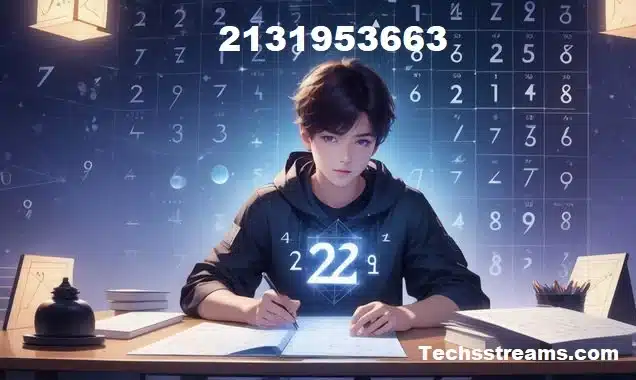
Have you ever come across a number that piqued your curiosity and made you wonder about its significance? Well, 2131953663 is one of those numbers. At first glance, it may seem like just a random collection of digits, but there’s more to it than meets the eye. Let’s dive in and unravel the mystery behind this intriguing number.
Basic Explanation of Sequences
Sequences are essentially an ordered list of numbers that follow a specific pattern or rule. They are fundamental in mathematics and appear in various forms, whether in natural phenomena, technology, or even in the patterns of everyday life.
The Mathematical Significance of Sequences
In mathematics, sequences help us understand the behavior of numbers and their relationships. They allow mathematicians to predict future values, find sums, and analyze the properties of numbers. This makes sequences a powerful tool in both theoretical and applied mathematics.
Decoding 2131953663
To understand the significance of 2131953663, we need to break it down and examine its components. Let’s start by looking at the number in smaller parts and see if we can identify any patterns or sequences.
Identifying Patterns
The number 2131953663 doesn’t immediately present a clear pattern, but that’s part of the fun of sequence analysis. By using different mathematical tools and techniques, we might uncover a hidden sequence or meaning behind these digits.
The Role of Sequences in Mathematics
Sequences have been studied for centuries, dating back to ancient civilizations. Mathematicians like Fibonacci and Euclid contributed significantly to our understanding of sequences, which has shaped modern mathematical thought.
Today, sequences are used in various fields such as cryptography, computer science, and even biology. Their applications are vast, making them a crucial area of study.
Types of Sequences
An arithmetic sequence is a sequence of numbers in which the difference of any two successive members is a constant. For example, the sequence 2, 4, 6, 8 is arithmetic because the difference is consistently 2.
Geometric Sequences
In a geometric sequence, each term after the first is found by multiplying the previous term by a fixed, non-zero number called the common ratio. An example is 3, 9, 27, 81, where each term is multiplied by 3.
The Fibonacci sequence is a famous sequence where each number is the sum of the two preceding ones, usually starting with 0 and 1. This sequence appears frequently in nature and mathematics.
2131953663 in Arithmetic Sequences
As mentioned, arithmetic sequences have a constant difference between consecutive terms. To determine if 2131953663 fits into an arithmetic sequence, we would need to identify a common difference.
How 2131953663 Fits
If we consider the digits separately, such as 2, 1, 3, 1, 9, 5, 3, 6, 6, 3, we might find a pattern. However, as a whole, 2131953663 does not fit neatly into an arithmetic sequence without further context or manipulation.
Definition of Geometric Sequences
In geometric sequences, each term is derived by multiplying the previous term by a constant ratio. This pattern is exponential rather than linear.
Analyzing 2131953663 for a geometric sequence requires checking if any subset of digits or groupings can multiply into the next. This is more complex and may not yield a straightforward geometric progression.
Definition of Fibonacci Sequences
Fibonacci sequences grow by summing the two previous terms. This simple rule creates a sequence that appears in many natural phenomena.
2131953663 does not immediately align with the Fibonacci pattern, but interestingly, parts of the sequence might. Further analysis could reveal if any portion of the number behaves in a Fibonacci-like manner.
Practical Applications of Sequences
Sequences are not just abstract concepts. They are used in coding algorithms, predicting stock market trends, and even in art. Understanding sequences allows for advancements in technology and improved problem-solving techniques.
Importance in Technology
In technology, 2131953663 sequences are crucial for data encryption, compression algorithms, and more. They ensure that our data is secure and efficiently processed. Sequences appear naturally in the arrangement of leaves, the branching of trees, and the spirals of shells. These natural occurrences often follow the Fibonacci sequence or other mathematical patterns.
Fibonacci in Nature
The Fibonacci sequence is famously present in the number of petals on flowers, the arrangement of pine cones, and the pattern of hurricanes. This natural prevalence underscores the importance of sequences.
Sequences in Technology
Algorithms rely heavily on sequences to perform calculations and process data. For example, sorting algorithms and search algorithms use sequences to optimize 2131953663 their operations. Sequences are vital in cryptography to encode and decode information. Complex sequences help protect sensitive data from unauthorized access.
Fun Facts about Sequences
Interesting Tidbits
Did you know that the digits of π form an infinite sequence? Or that certain sequences can predict population growth or the spread of diseases? Sequences are full of fascinating surprises.
Famous Sequences
Apart from the Fibonacci sequence, there are many other famous sequences like the prime numbers and the Catalan numbers, each with its unique properties and applications.
How to Generate Sequences
Generating sequences can be as simple as following a rule. For example, start with a number and add a constant to get the next term 2131953663 or multiply by a constant (geometric sequence). There are many tools and resources available, from mathematical software like MATLAB and Wolfram Alpha to online calculators and tutorials, to help generate and analyze sequences.
Challenges in Sequence Analysis
One common challenge is identifying the rule or pattern that a sequence follows, especially with more complex sequences that don’t have an obvious pattern. Advanced sequence analysis might involve recursive formulas, generating functions, or even using sequences in higher mathematics like calculus and number theory.
Conclusion
Sequences are a fundamental part of mathematics and life. Whether it’s the seemingly random number 2131953663 or the well-known Fibonacci sequence, understanding sequences helps us make sense of the world. They are everywhere, from the technology we use to the natural world we observe.